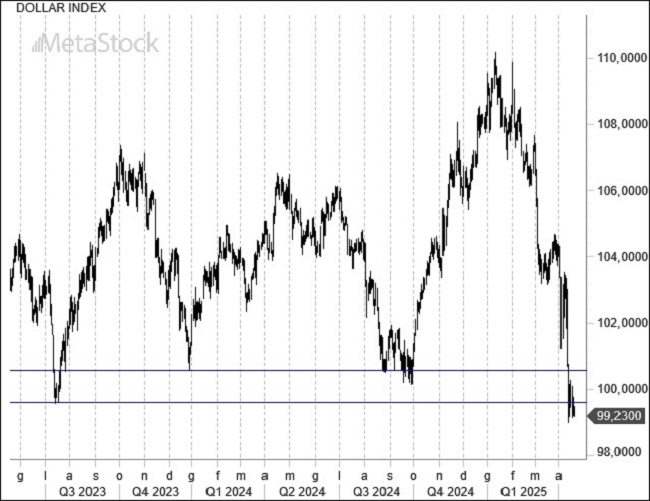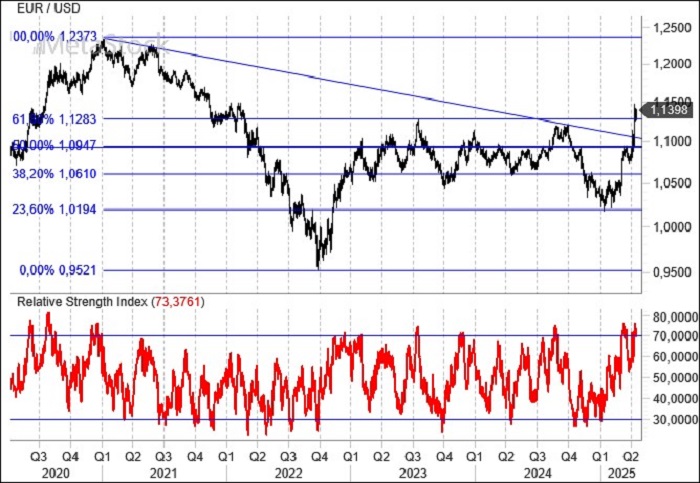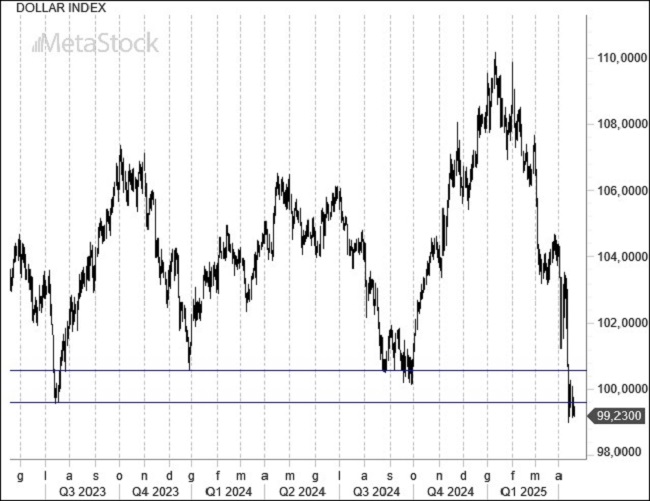- The Federal Reserve shows no intention of aligning with Trump’s political agenda, as concerns over a possible resurgence of inflation compel the central bank to maintain its restrictive stance on interest rates longer than anticipated. Trump’s frustration with Powell is intensifying, reportedly considering his removal.
- Europe is keeping diplomatic channels open with Washington, aiming to ease or eliminate trade barriers. For now, the U.S. has offered only tentative signs of cooperation. Meanwhile, the ECB has cut rates by another 25 basis points.
- The EUR/USD continues to push toward recent highs, while the Dollar Index tests key tactical and strategic support levels.
Powell Holds the Line as Trump Turns Up the Heat and Trade Tensions Escalate
The Fed isn’t coming to Trump’s rescue—quite the opposite. Fed Chair Jerome Powell’s comments last week revealed a growing rift between the central bank and the White House.
Powell reiterated that monetary policy decisions will remain independent of political pressure. He emphasized that current rate levels are appropriate and should remain steady to fully assess the effects of tariffs on consumer spending and business investment.
While the U.S. economy continues on a solid growth path, Powell noted increasing uncertainties on the horizon. He acknowledged that the recent wave of tariffs is likely to generate at least a temporary uptick in inflation. The Fed now finds itself caught between its dual mandates: stable inflation and full employment—two goals increasingly at odds. Tariffs may stoke inflation, while a slowing economy could threaten jobs.
Trump’s response to Powell’s position was swift and angry. Rumors have emerged that the former president, currently campaigning to return to office, is actively considering the removal of Powell from his post.
Markets are currently pricing in 100 basis points of rate cuts over the next 12 months, but with considerable uncertainty around the path forward.
Tensions with China continue to escalate, with the dispute over rare earth metals emerging as a major flashpoint. The U.S. imports around 70% of its rare earths from China—critical materials for the manufacturing sector.
Meanwhile, Europe is cautiously optimistic following signs of openness from Washington. Italian Prime Minister Giorgia Meloni’s recent visit to the White House may have laid the groundwork for a more constructive diplomatic dialogue.
For now, the EU is holding off on retaliatory tariffs. Trump has already imposed a 10% general tariff and a 25% levy on autos and metals—measures currently in effect between the two trading blocs. The ECB, for its part, has responded to Europe’s softer inflation outlook and sluggish growth by cutting rates to 2.25%.
Technical Analysis: Dollar Index on the Brink as EUR/USD Eyes Bullish Breakout
The U.S. dollar remains under pressure against key G10 currencies, particularly the euro and the Japanese yen—both of which carry significant weight in the Dollar Index. That index is now approaching critical support levels. The 100-point mark is under pressure, and the 2023 low represents the final line of defense before a break that could have substantial strategic implications for long dollar positions.

EUR/USD: Overbought, Yet Pushing Higher
The EUR/USD has returned to overbought territory, but that hasn’t stopped it from testing major resistance near 1.13. This level marks roughly two-thirds of the retracement from the 2021 high of 1.237. If the pair closes above this level at the end of April, it could signal a strong bullish breakout and mark a decisive shift in sentiment against the U.S. dollar. In that case, the next target could be the 1.20 area in the months ahead.



Leave a Reply
You must be logged in to post a comment.